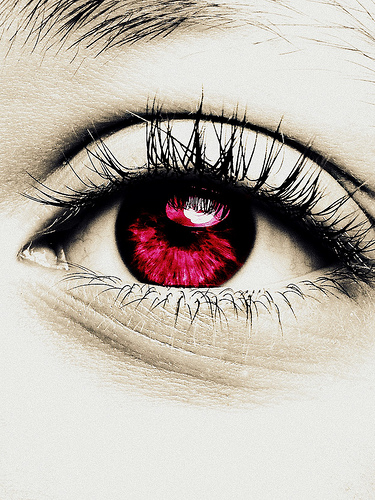Olympic athlete Kerri Walsh-Jennings didn’t let pink eye ruin her dreams.
If you are like many Americans (or any other world citizen for that matter), then there is a good chance that you have been absolutely glued to your television this past week to keep up with the excitement and activity surrounding the 2012 London Olympics. We here at OCLI have been personally invested in this year’s games as three of our own LASIK For The Gold athletes have been given the chance to head to London and compete for their own chance at a medal for their country.
 Although, just like with any intense sporting competition, the American athletes have had their fair share of ups and downs during competition this year. An up being our very own Michael Phelps becoming the most decorated Olympian of all time, or the amazing achievements of our women’s U.S. gymnastics team (a.k.a. the “fab five”).
Although, just like with any intense sporting competition, the American athletes have had their fair share of ups and downs during competition this year. An up being our very own Michael Phelps becoming the most decorated Olympian of all time, or the amazing achievements of our women’s U.S. gymnastics team (a.k.a. the “fab five”).
However, when it comes to down moments, it doesn’t get worse than training year after year to become the best at your sport, flying all the way to London to compete for your country, and then coming down with a severe, itchy, swollen case of pink eye. This is exactly what happened to beach volleyball star Kerri Walsh-Jennings as she was getting ready to bid to win her third straight Olympic gold medal.
This nasty vision condition had left Kerri’s eye inflamed and irritated, but she also insisted that nothing would stand in the way of her and her partner, Misty May-Treanor, from clinching another title this year in London.
So, just how might this yucky eye disease effect Kerri’s vision and her chance at gold? To help you understand a little bit more about this common vision problem, we have put together some basic facts about pink eye that will help Kerri (and pink eye sufferers everywhere) know what to expect during this itchy time.
What Is Pink Eye?
Pink eye (or what is also known as conjunctivitis) is the swelling of the conjunctiva―the mucous membrane that lines the eyelid and the eye’s surface. This can cause puffiness and swelling around the eye, which occurs anytime there is irritation or infection around the lining of the eye.
How Does Pink Eye Develop?
Unfortunately, pink eye is very contagious and can spread quite easily. Most cases of pink eye are usually caused by viruses or bacteria, which can come from sharing an infected object such as a washcloth or towel. However, pink eye can also occur from chemicals, allergies or dry eyes from lack of tears. Luckily, viral pink eye is not very serious and will usually go away within 7 to 10 days without medical treatment.
How Serious Is Pink Eye?
As we mentioned above, viral pink eye is usually a very minor infection and the person can usually return to work or school once the symptoms begin to improve (within 3-5 days). However, bacterial pink eye is a little more serious. Symptoms of bacterial pink eye include redness in the white of the eye, grey or yellow drainage from the eye, or swelling of the upper eyelid. If you experience any of these symptoms, be sure to visit your eye doctor as soon as possible.
How Do You Prevent Pink Eye?
Because most pink eye is caused by viruses, for which there is not usually a medical treatment, the best way to avoid catching pink eye is to preventing it’s spread. Therefore, be sure to wash your hands often and immediately wash contaminated items, such as hand towels or pillow cases. Also, if you do happen to come down with pink eye, be sure to replace items such as eye drops or eye cosmetics to avoid any re-infection that could occur after recovery.
Image: Source